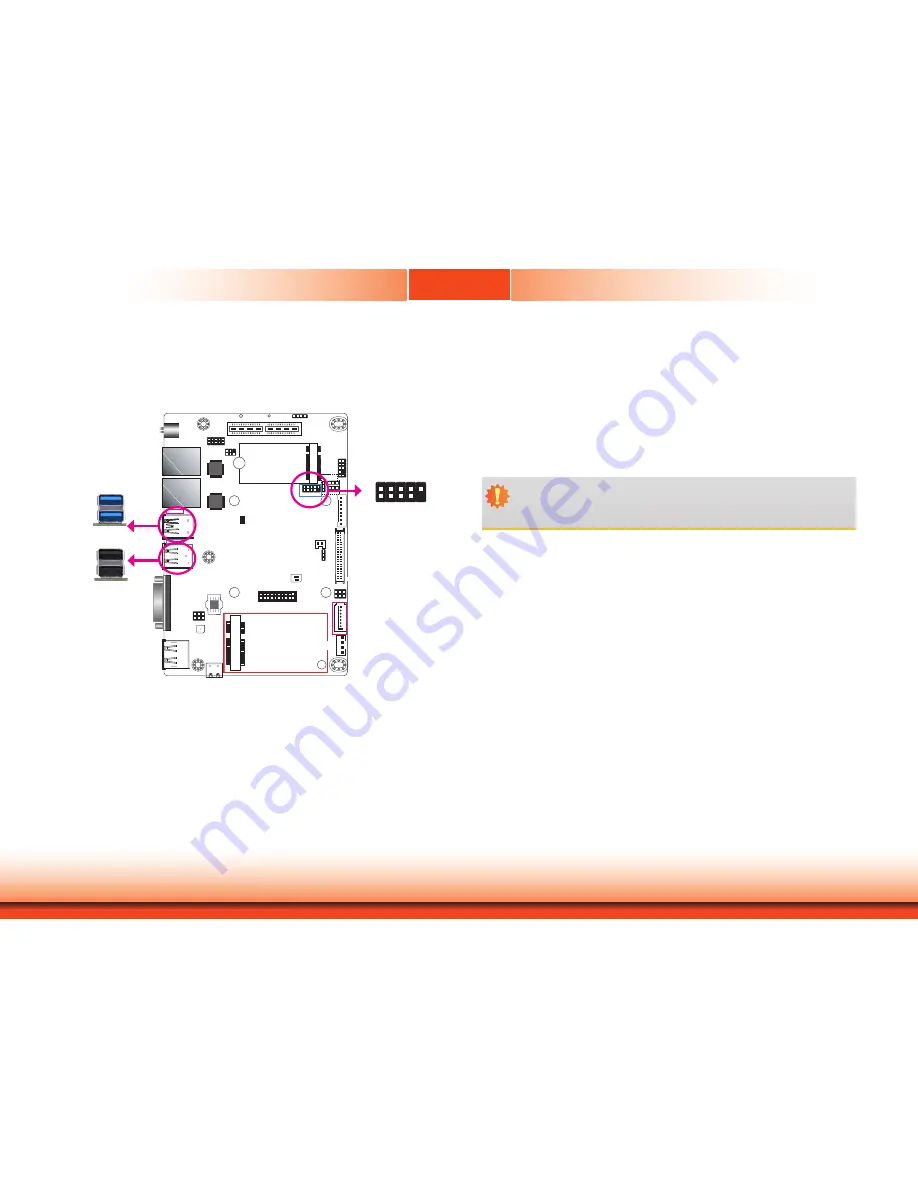
20
Chapter 5
Chapter 5 Ports and Connectors
USB Ports
Important:
If you are using the Wake-On-USB Keyboard/Mouse function for 2 USB ports, the
+5V_standby power source of your power supply must support ≥1.5A. For 3 or more
USB ports, the +5V_standby power source of your power supply must support ≥2A.
1
1 2
910
(JP1)
(JP10)
(JP11)
Buzzer
LAN 1
LAN 2
Mini PCIe
M.2
SPI Flash
BIOS
1
Clear CMOS Data (JP6)
2
1
5
6
Front
Panel
1
5
6
2
LVDS LCD Panel
1
1
SATA 0
SATA 3.0
1
2
Battery
19
20
1
2
COM 1-2
1
1
ON
2
Front Audio
1
9
10
2
Digital I/O
USB 5-6
1
2
2
1
40
USB 2.0
DP++
Intel
WGI211AT
USB 1/4
USB 3.0
VGA
1
2
5
SMBus
Intel
WGI211AT
USB 2/3
USB 2.0
USB3.0
Type C
OTG
SATA
Power
Standby
Power LED
SPK-OUT
1
1
1
39
1
2
79
80
LCD/Inverter
Power
EIO (optional)
1
DC-in
DC-in
DC-in
USB 4
USB 3.0
USB 1
USB 3
USB 2
USB 2.0
USB 2.0
VCC -Data1 +Data1 Gr
ound
N.C
VCC
+Data0
-Data0
Gr
ound
Ke
y
2
1
9
10
The USB device allows data exchange between your computer and a wide range of simultane-
ously accessible external Plug and Play peripherals.
The system board is equipped with 2 onboard USB 3.0 ports (USB 1 & USB 4) and 2 onboard
USB 2.0 ports (USB 2 & USB 3). The 10-pin connector allows you to connect 2 additional USB
2.0 ports (USB 5-6).
BIOS Setting
Configure the onboard USB in the Advanced menu (“USB Configuration” submenu) of the
BIOS. Refer to Chapter 7 for more information.
Driver Installation
You may need to install the proper drivers in your operating system to use USB devices. Refer
to Chapter 8 for more information.
Wake-On-USB Keyboard/Mouse
The Wake-On-USB Keyboard/Mouse function allows you to use a USB keyboard or USB mouse
to wake up a system from the S3 (STR - Suspend To RAM) state.
















































